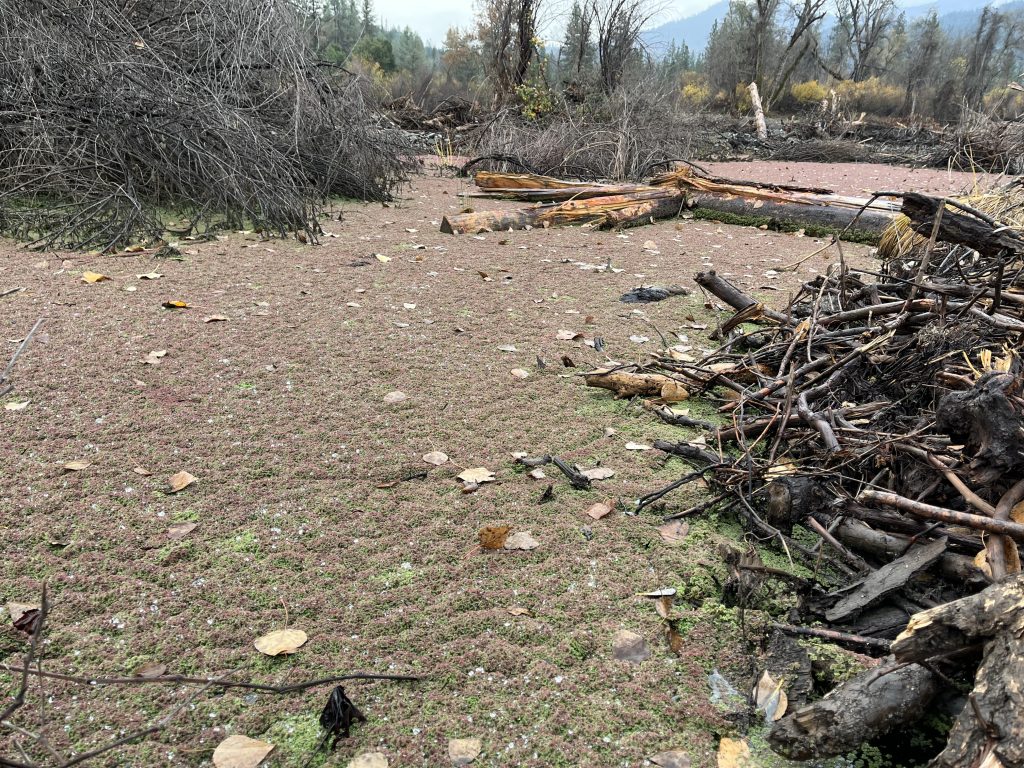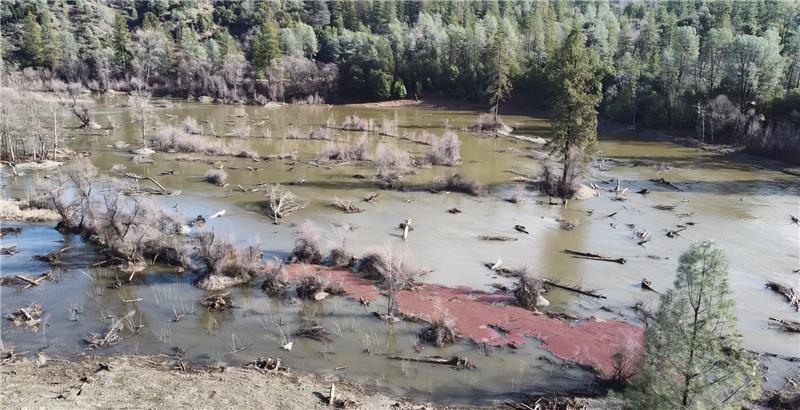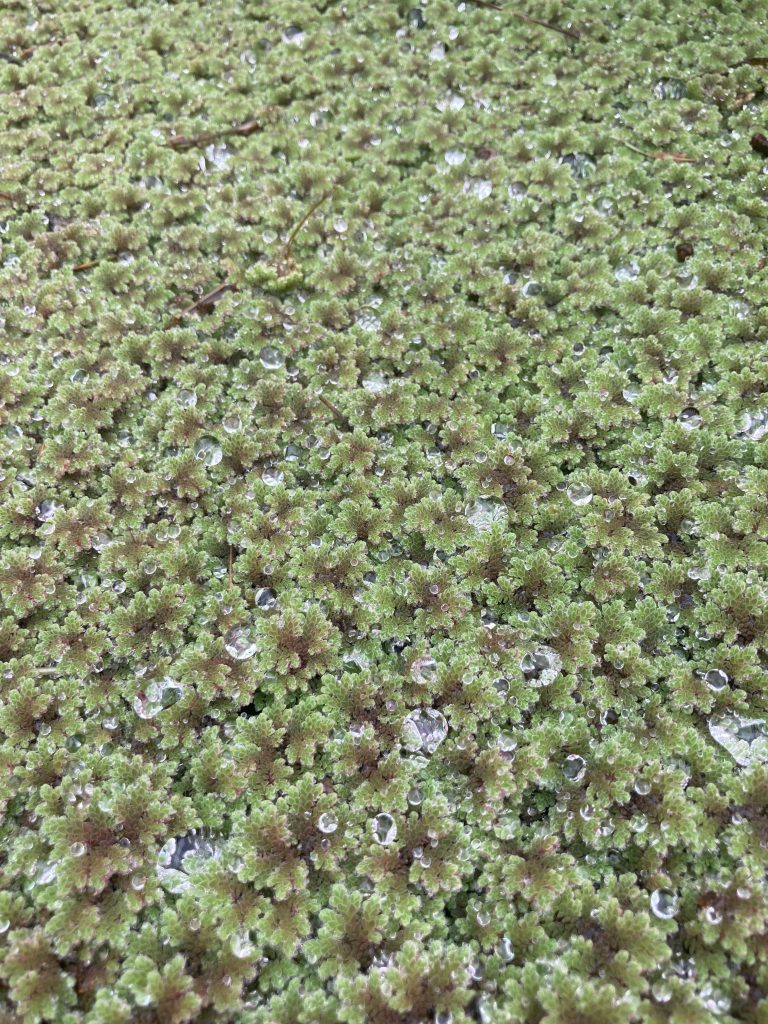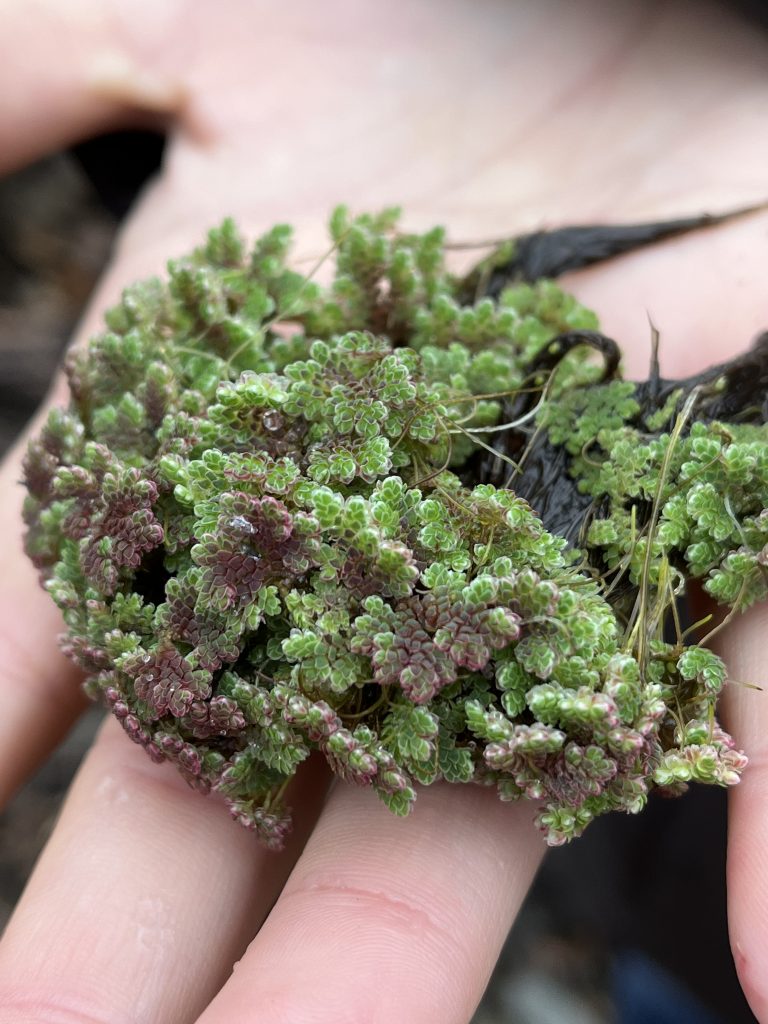Water fern (Azolla filiculoides)
There are various native plant species that cover the surface of stagnant or slow-moving water. One of these species is called water fern (Azolla filiculoides). Not to be confused with algae, Azolla is an aquatic vascular plant with a very shallow root system that grows on the water surface rather than in the water column. True to its name, it is a type of fern. Typically, the plant is bright or dark green, making the water appear to be covered in “pond scum”, but this plant is anything but scum. As a stress reaction, Azolla can turn a deep red-amber color, appearing dead or dormant. Despite the discreet and unassuming nature of this unusual plant, it has some mind-blowing properties, including the ability to purify water and fix nitrogen.



Nitrogen is often a limiting nutrient for primary producers because atmospheric nitrogen (N2) is not readily utilized by plants. As a result, many plants (such as those in the pea family, Fabaceae) have evolved the ability to “fix” nitrogen by converting it to an accessible form of nitrogen (NH4+). Some plants do this with the help of bacterial partners, as is the case with red alder (Alnus rubra) and specific bacteria, which partner to produce root nodules. In return for providing a home, the actinomycetes share some of their usable nitrogen with the red alder. While this activity occurs in the roots of the host plant, excessive nutrients are leaked into the surrounding environment, thus providing bioavailable nitrogen to other plant species and improving soil fertility within the red alder ecosystem. Instead of partnering with a bacteria like red alder does, Azolla has a symbiotic relationship with a cyanobacteria (blue-green algae) species called Anabaena azollae. The Anabaena is housed within the leaves of Azolla, and in return, Azolla receives fixed nitrogen which is ultimately shared with the surrounding environment.

In addition to being able to contribute nutrients to the environment, Azolla has the ability to uptake metals as well as organic and inorganic pollutants from water. This process, known as phytoremediation, can take place via 4 different mechanisms. I’ll exclude the chemistry details here, but the important takeaway is that this little plant can extract toxic pollutants from water. Researchers are investigating the use of this plant in wastewater treatment facilities. There are countless more benefits and potential applications of Azolla to modern human civilization – including the potential to split water molecules and create energy. Azolla is endlessly interesting.
So how does Azolla affect our ecology here along the Trinity River? By covering slower moving bodies of water like ponds and backwater areas, it helps regulate water temperatures and provides habitat for cover-loving species. By the same mechanism, it also decreases habitat for mosquitos. It also serves as a food source for a wide variety of wildlife, from western pond turtles to waterfowl. These properties, combined with the ability to fix nitrogen and remove pollutants from water, make this easily over-looked water fern an important constituent of riparian and aquatic habitats.

Veronica Yates, Riparian Ecologist
(former) Hoopa Valley Tribal Fisheries Department, Weaverville
